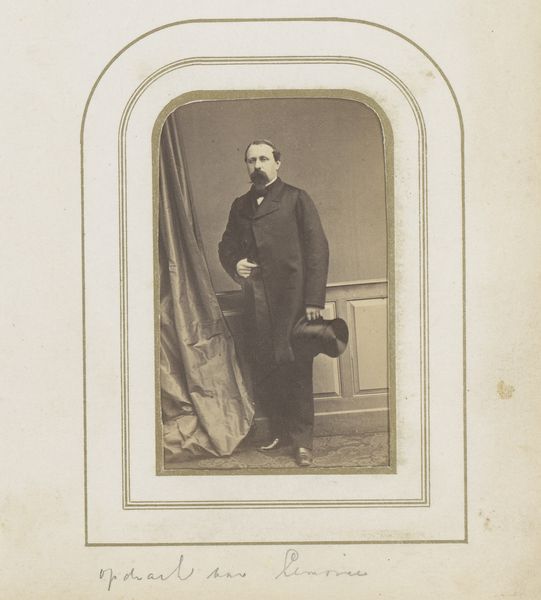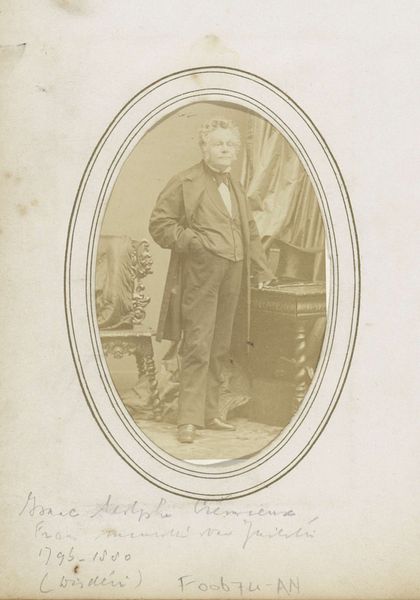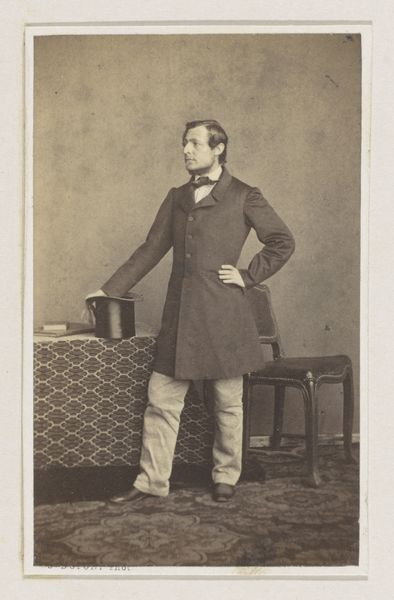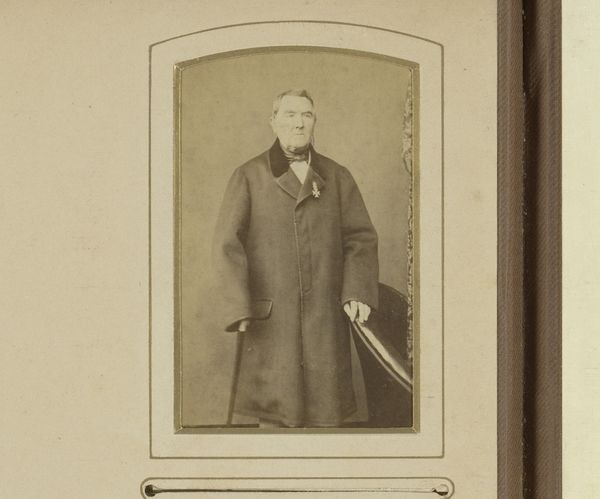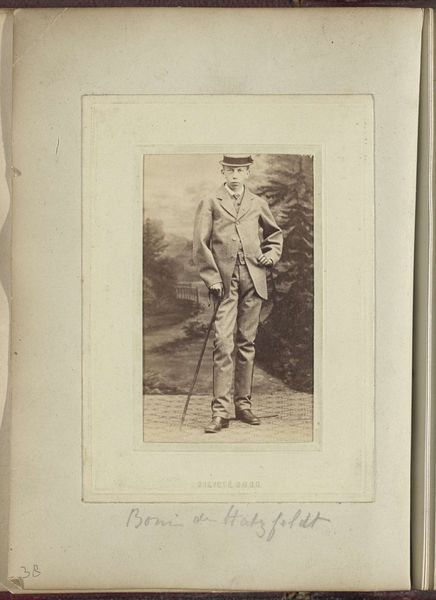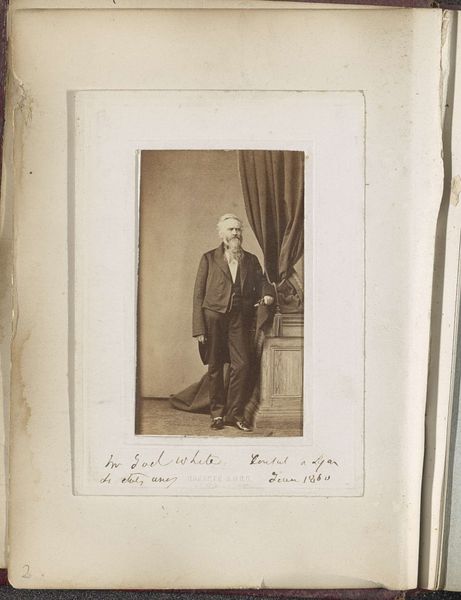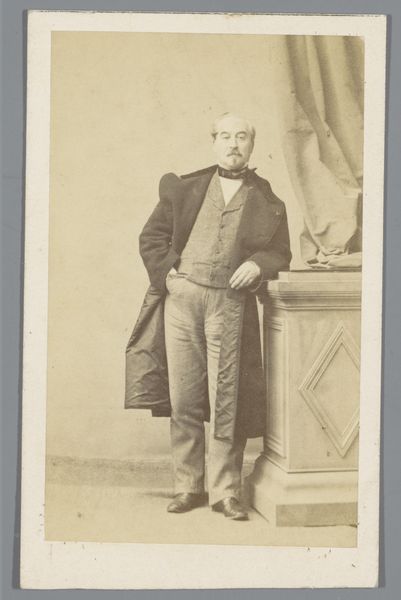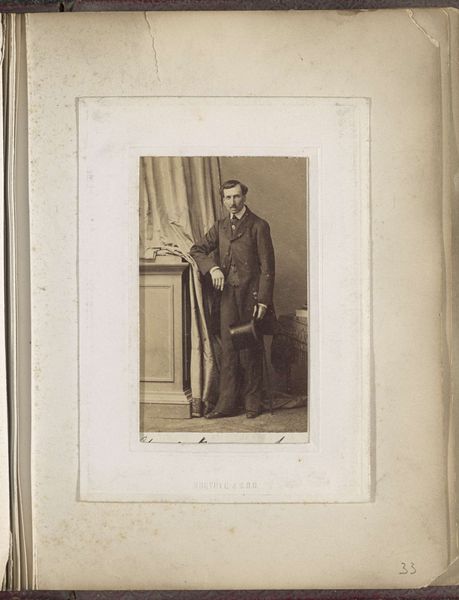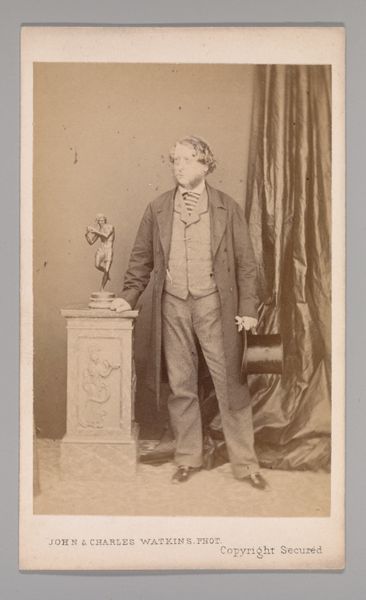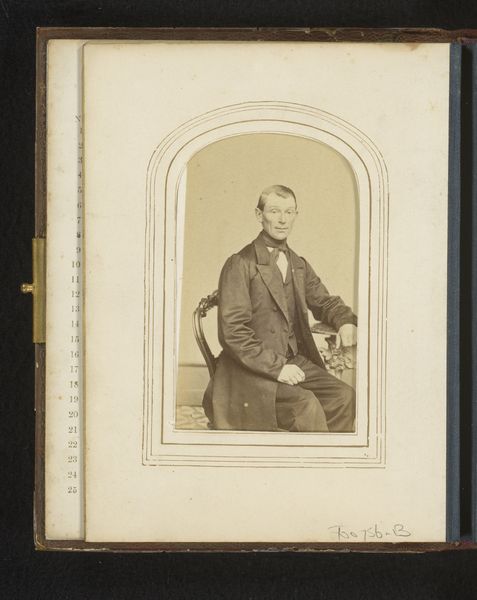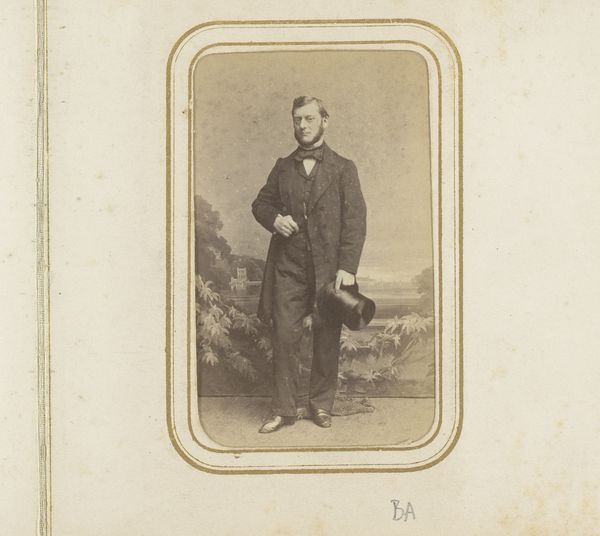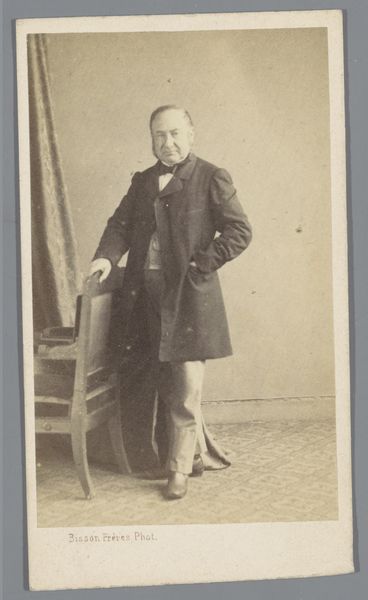
Dimensions: height 93 mm, width 56 mm, height 107 mm, width 65 mm
Copyright: Rijks Museum: Open Domain
Curator: Here we have a captivating example of 19th-century portraiture: "Portret van de heer D'Hornoy," a gelatin-silver print likely created between 1860 and 1865 by Alexandre Ken. Editor: It has a subdued quality, almost sepia-toned, with this incredibly still figure dominating the frame. The composition feels meticulously constructed and somewhat formal. Curator: Indeed. Looking closely, we can see the deliberate arrangement: D'Hornoy posed beside an ornately carved table, with a partially visible backdrop that lends depth. Notice the material conditions, the emerging market of photography, and the skilled labor involved in producing albumen and gelatin-silver prints at the time. Editor: The photograph’s very materiality is fascinating – the way the light interacts with the gelatin-silver to produce gradations of tone is subtle yet potent. The man’s gaze, although seemingly straightforward, almost resists engaging with the viewer; notice the almost symmetric construction in posture. Curator: The romantic style underscores this focus, offering a specific lens on his stature and even character. The production of such portrait would likely be reserved for certain social echelons that had access to means and networks that can be a starting point for further socio-historical inquiry. Editor: The image's stillness invites a certain reading: the texture and grain seem intentionally preserved to emulate an antiquated sense. However, I find the detail distracting, almost preventing engagement with the emotion, that stillness. Curator: Well, by engaging with the detail, the photograph reveals insight in labor, as I previously noted; the material constraints and processes reflect that the man who likely held a similar station in life may only have a very formal way of representation. This reflects an aspect of society during this era. Editor: I still perceive it as a static expression, almost stoic, the symmetry enhancing the figure's detachment and the subdued lighting accentuating D'Hornoy’s isolation from those same class divisions. Curator: Well, considering this portrait through the prism of historical modes of representation, we begin to see D'Hornoy's placement within specific, existing social structure of the era. Editor: A fascinating work on examination which highlights a confluence between emotional distance and the artistic structures designed to frame the sitters social station and experience within its production.
Comments
No comments
Be the first to comment and join the conversation on the ultimate creative platform.
